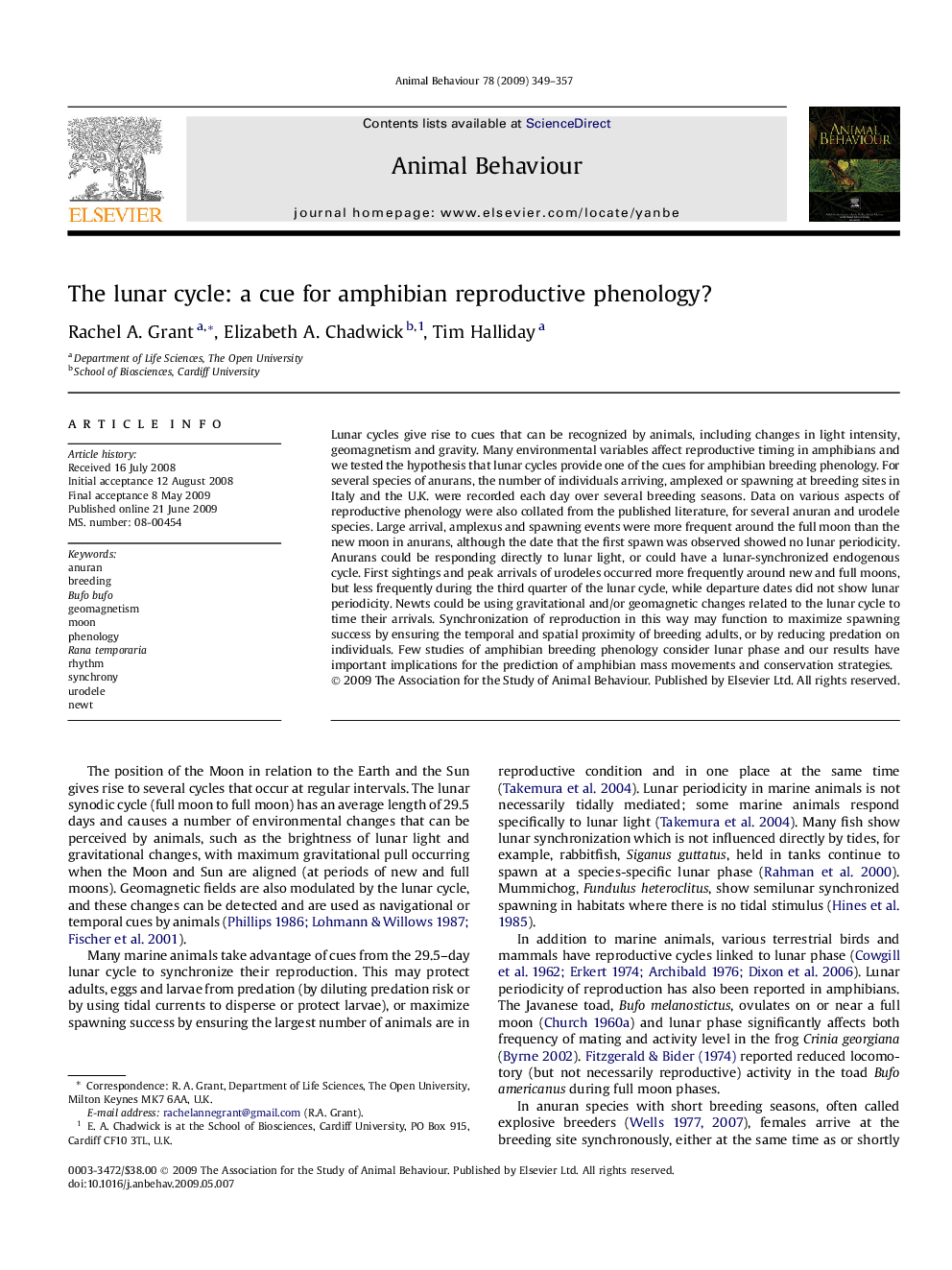| کد مقاله | کد نشریه | سال انتشار | مقاله انگلیسی | نسخه تمام متن |
|---|---|---|---|---|
| 2417434 | 1104319 | 2009 | 9 صفحه PDF | دانلود رایگان |

Lunar cycles give rise to cues that can be recognized by animals, including changes in light intensity, geomagnetism and gravity. Many environmental variables affect reproductive timing in amphibians and we tested the hypothesis that lunar cycles provide one of the cues for amphibian breeding phenology. For several species of anurans, the number of individuals arriving, amplexed or spawning at breeding sites in Italy and the U.K. were recorded each day over several breeding seasons. Data on various aspects of reproductive phenology were also collated from the published literature, for several anuran and urodele species. Large arrival, amplexus and spawning events were more frequent around the full moon than the new moon in anurans, although the date that the first spawn was observed showed no lunar periodicity. Anurans could be responding directly to lunar light, or could have a lunar-synchronized endogenous cycle. First sightings and peak arrivals of urodeles occurred more frequently around new and full moons, but less frequently during the third quarter of the lunar cycle, while departure dates did not show lunar periodicity. Newts could be using gravitational and/or geomagnetic changes related to the lunar cycle to time their arrivals. Synchronization of reproduction in this way may function to maximize spawning success by ensuring the temporal and spatial proximity of breeding adults, or by reducing predation on individuals. Few studies of amphibian breeding phenology consider lunar phase and our results have important implications for the prediction of amphibian mass movements and conservation strategies.
Journal: Animal Behaviour - Volume 78, Issue 2, August 2009, Pages 349–357